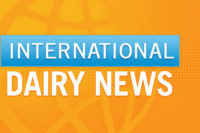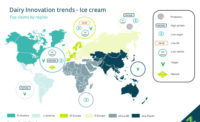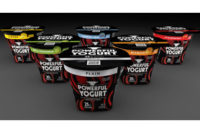Rabobank: Mergers and acquisitions shake things up among dairy’s global top 20
Nestlé, aided by a relatively stable Swiss franc vs. the U.S. dollar, still tops this year’s list.

In 2018, lower commodity prices, adverse weather conditions in key export regions, a strong U.S. dollar and currency shifts affected the combined turnover of dairy’s top 20 companies globally, said Rabobank, a cooperative bank based in Utrecht, the Netherlands. In U.S. dollar terms, Rabobank still saw an increase of 2.5% for the year, compared to 7.2% in the previous year. However, combined 2018 turnover in euro terms dropped by 2.0% vs. an upward trend of 5.1% in 2017.
“The top three remained the same, although the gap between numbers one and two continues to narrow,” said Saskia van Battum, dairy analyst. “For the third year in a row, there are no new entrants in the list, due to a lack of elephant deals over the past 18 months, but some reshuffling took place.”
Merger and acquisitions (M&A) are here to stay. In 2018, 111 deals took place in the dairy complex, slightly down compared to 127 transactions in the previous year. However, as of mid-2019, the number of dairy deals already stands at 85, of which 32 were cross-continental, Rabobank said.
Nestlé, aided by a relatively stable Swiss franc vs. the U.S. dollar, still tops this year’s list, supported by organic growth coming from its infant nutrition business rather than from milk and ice cream. Nevertheless, Lactalis is closing in, Rabobank said.
Fonterra moved into fourth place, following the acquisition of the remaining stake of the Darnum IMF plant in Australia. Yili leapfrogs Saputo and moves into eighth place, with sales up 13.4% year-over-year in U.S. dollar terms, Rabobank said. Meanwhile, increasingly fierce competition in the domestic market forces Chinese Yili and Mengniu to look overseas for growth.
Looking forward into the next year, Rabobank said it expects to see further growth from acquisitions, with a long-awaited shift in the top three of the global ranking likely. However, slower economic growth in China and a looming (U.S.) recession will probably hamper organic growth. At the same time, companies will reconsider their position in light of future risks caused by U.S./European Union/Mexico/China trade tensions, Brexit and increasing environmental constraints around the globe.
View the report here.
Looking for a reprint of this article?
From high-res PDFs to custom plaques, order your copy today!






